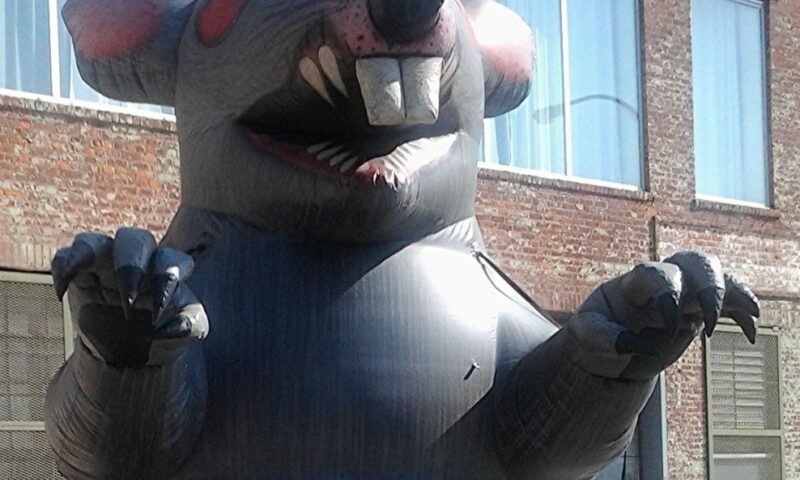

On January 23 of this year, Scabby the Rat, a 16 foot tall rodent first inflated in 1990 by protesting Chicago bricklayers, had a scare. Sean McGarvey (@BCTDPrez), president of the AFL-CIO Building and Construction Trades Department, took to Twitter following a meeting with presidents and state councils to address his 488 followers: “Issued a call to retire the inflatable rat. It does not reflect our new value proposition.” Jill Cashen, Communications Director for United Food & Commercial Workers (UFCW) responded favorably @BCTDPrez and to her 387 followers, notching up the rhetoric to #deflatetherat.
On January 24, @ScabbyTheRat (7,737 followers) who reports on “anti-labor activity no matter where it happens” had a day in the sun, albeit it a busy one. Catapulted by Mike Elk (@MikeElk, 10,278 followers) — perhaps labor’s most dedicated and voracious Tweeter — and his story from In These Times, @ScabbyTheRat tweeted 28 times,
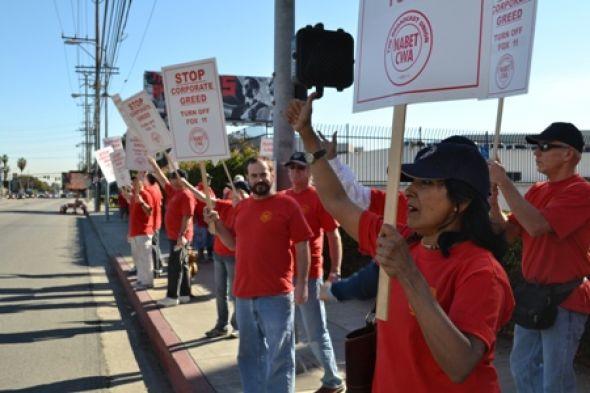
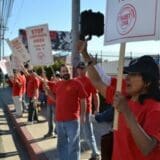
Since May of 2011, the producers, editors, photographers and other NABET-CWA* workers at KTTV and KCOP-TV in Los Angeles have been trying to negotiate a fair and reasonable contract with the owner of the stations, Fox Television – but the company has something else in mind.
Fox wants to end the standard 40-hour work week by putting NABET members on a seven-and-a-half-hour work day, and the management also wants to eliminate the paid meal period — which has been an industry standard for decades. Cutting back employees to a 37.5 hour work week effectively amounts to a 6.25 percent wage cut.
It doesn’t end there.
Fox also wants to cut vacation days, sick days, holidays and meal penalties. Premium pay for daily employees would be drastically reduced. Put it all together and many employees would see their wages and benefits reduced by 10 to 20 percent!
» Read more about: Fox: Gouge KTTV and KCOP Workers of Hours and Benefits »


Well… my 68 year old brain has done it again. It’s bad enough going into a room and wondering why you’re in there, but leaving your wallet on top of your car at the gas station, and then driving off, has much more serious consequences. It’s being pre-occupied with multi-tasking in this jet-set age that has overloaded the wiring upstairs. The New York Times had an article that creative acts need a singular focus; you can’t answer the phone, eat lunch, or text while playing music or painting. So I don’t know where my mind was after I set the billfold on the roof, pumped petrol, and left.
Certainly the miracle woman who was driving by later was in her present mind. That afternoon I was in a complete panic, going back to the gas station, looking everywhere, asking the attendant if anything had been turned in…


My (early) New Year’s resolution was to get a credit card. You may remember that I have never had a credit card. And thus if I were on the dating market, my OKCupid inquiries would be flatly rejected. It’s not that I have a bad score. I just don’t have one. I had a good score when I was dutifully paying off my student loan after I graduated, but then through paying dirt-cheap rent in Harlem and never paying for cable I was able to pay off the loan. Since then I haven’t owned any credit products. I’ve paid my rent on time every month and paid every bill before the due date. But those things don’t make their way over to FICO. I’ve thus landed myself in quite the Catch-22 that speaks volumes about the lending industry and our reliance on it.
When I moved into a new apartment three years ago,
» Read more about: Give Her Credit: A Writer’s Pursuit of Plastic Debt »
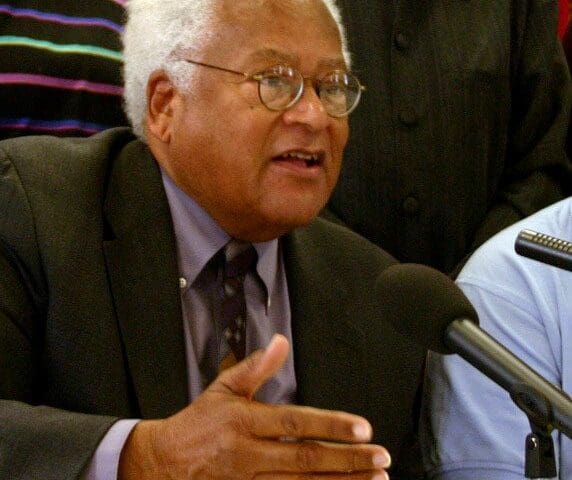
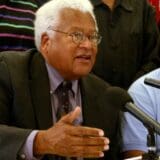
Civil rights leader Reverend James Lawson announced last Saturday that he’s planning to give himself to a new nonviolent direct action campaign with the Children’s Defense Fund, but wasn’t ready yet to discuss the details. The setting was his monthly workshop on the theory of nonviolence, where upwards of 35 people of diverse ages and backgrounds were gathered to hear Lawson present his provocative thoughts on basic human values, spirituality and the need for systemic social change.
Credited with introducing nonviolent direct action to the 1960s civil rights movement, Rev. Lawson feels the theory of nonviolence has had the equivalent impact on our understanding of the universe as Einstein’s theory of relativity. He sees the recent growth of California’s labor movement as an outgrowth of what Lawson calls “this science of social change” introduced to the state by farm worker leader Cesar Chavez in the 1960s and 70s.
Lawson was dressed last weekend in pressed khaki slacks,
» Read more about: James Lawson: Training for Nonviolence’s Next Step »
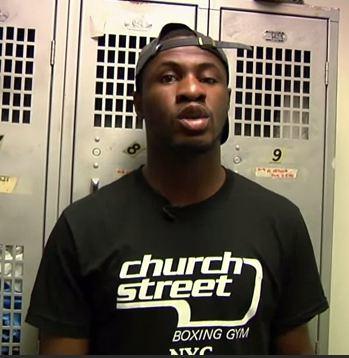

It was a viral Internet sensation last year, but Boxing Lessons with Eric Kelly is worth a second viewing today, as we swing into a year that promises only sharper divisions between those who control wealth and those who don’t. Eric Kelly, a former amateur boxer from Brooklyn, works at New York’s Church Street Gym, where he trains Wall Street executives in the manly art of self-defense.
Actually, according to the video, he mostly insults these Masters of the Universe nonstop – and they love it. In a recent SB Nation piece on Kelly, writer Brin-Jonathan Butler asked one of the gym’s patrons, a JP Morgan banker, why he has taken up boxing under the dismissive gaze and trash talk of Kelly. Reports Butler:
“You know,” he began with a sheepish smirk, “maybe, deep down, we just miss that whole Occupy Wall Street movement a little bit.


In the present (increasingly precarious) workforce more young people with expensive humanities degrees are being forced to utter a phrase that couldn’t be further from the high language of the academy: “May I take your order?” In an awesome new piece in The Nation, Nona Willis Aronowitz draws an important distinction between workers who are forced to take low-paying jobs despite their education and those who are making ends meet the only way they know how.
Aronowitz uses the protagonists from several popular new shows to indicate larger workplace trends. From The Nation:
Post-recession, we often blur the distinction between the downwardly mobile and the permanent underclass—especially when wringing our hands over what will become of millennials, many of whom entered the job market just as it was weakest. Here’s an easy way to tell them apart: both are struggling, but the former has a safety net.
» Read more about: Channeling Poverty: Poor v. Broke on TV »


Forty-five years after his death, Martin Luther King’s vision of racial and economic progress continues to exert a powerful influence on our society. In this video, Marilyn, a young African-American electrician apprentice, reflects on MLK’s legacy and how construction work and access to a good career has radically improved her life. Construction gives Marilyn not only socioeconomic mobility, but also an intellectual and physical challenge.
“From the Ground Up” is a series of videos profiling diverse individuals within the construction trades, ranging from veterans to women to former convicts to youth of different incomes and ethnicities.
Happy Martin Luther King Jr. Day to all! Please enjoy the video and share it with friends.
» Read more about: Dr. King’s Economic Legacy: Jobs and Justice »
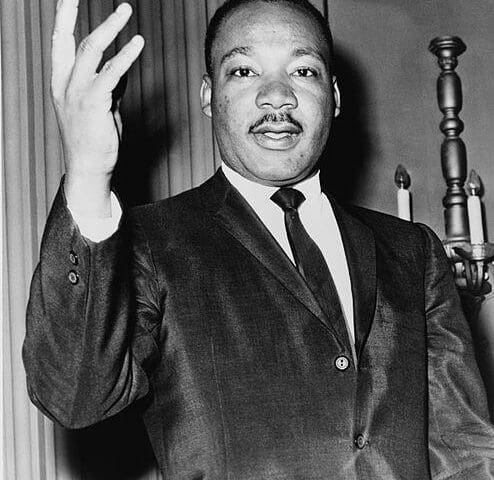
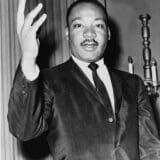
Today Rev. Martin Luther King Jr. is viewed as something of an American saint. His birthday is a national holiday. His name adorns schools and street signs. Americans from across the political spectrum invoke King’s name to justify their beliefs and actions, as President Barack Obama will no doubt do in his second Inaugural speech and as gun fanatic Larry Ward recently did in outrageously claiming that King would have opposed proposals to restrict access to guns.
So it is easy to forget that in his day, in his own country, King was considered a dangerous troublemaker. He was harassed by the FBI and vilified in the media.
In fact, King was radical. He believed that America needed a “radical redistribution of economic and political power.” He challenged America’s class system and its racial caste system. He was a strong ally of the nation’s labor union movement. He was assassinated in April 1968 in Memphis,
» Read more about: Martin Luther King Jr., Eternal Radical »




Last week’s purchase of the SF Weekly by the owners of the SF Examiner and Bay Guardian was a shocking and telling development. It was shocking because few seemed to care, and telling because it showed the increasingly irrelevance of daily print English language media in San Francisco. I described in 2009 why the San Francisco Chronicle’s huge financial losses and circulation decline put its future as a daily print newspaper in doubt, and these losses have continued while the paper has fallen out of the top 25 in circulation for the first time (its print version had only 165,000 readers in March 2012, a nearly 50 percent drop since 2009). The Chronicle’s owner is looking to profit from real estate development, not journalism. Layoffs at the SF Weekly have begun and the staffs of the once combative weeklies will eventually merge.
» Read more about: Economy and Technology Pound Bay Area Newspapers »


The Line, whose trailer appears here, is Emmy Award-winning producer Linda Midgett’s 44-minute documentary about the many faces of poverty in America. The film examines and explodes prevailing myths about people living below the poverty line, reminding us that most of America’s poor live in its suburbs and not the inner city. To learn more about The Line or to view the entire film, go to this link.

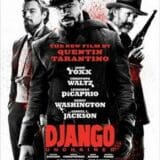
2013 is making it difficult to avoid one of America’s greatest sins—slavery. We’ve just marked the 150th anniversary of the Emancipation Proclamation, and a plethora of films, documentaries and TV specials are scheduled to address slavery.
One blockbuster hit that’s playing in cinemas now, and is likely to walk away with several Golden Globes and Oscars, is Quentin Tarantino’s Django Unchained.
Django Unchained depicts a slave-turned-bounty hunter (Jamie Foxx) who fearlessly treks across the U.S. to find his wife (Kerry Washington) in order to rescue her from a brutal Mississippi plantation owner (Leonardo DiCaprio).
The film is classic Tarantino; this time a homage to the spaghetti western with romance and revenge narrative. Tarantino set the story in the most unlikely of places— America’s Deep South before the Civil War in 1858.
Tarantino is known as the “King of Carnage,” and his films’ aestheticized depictions of violence (which he calls “movie violence”) is both cruelly disturbing yet undeniably entertaining.
» Read more about: The Peculiar Controversy: Quentin Tarantino’s “Django” »


The New York Times and other sources report today that Aaron Swartz, a co-founder of the social news site Reddit, was found hanged in his Brooklyn apartment. “At 14,” the Times noted, “Mr. Swartz helped create RSS, the nearly ubiquitous tool that allows users to subscribe to online information.”
The 26-year-old computer prodigy was under federal indictment for hacking into JSTOR, an online academic resource whose materials are available on a subscription-only basis, and making nearly its entire library of literary and scientific articles available to the public.
At the time of his death Swartz was awaiting trial and faced up to 35 years in prison. (In 2009, Swartz hacked into the U.S. government’s PACER system, which tracks federal court cases, and made available online millions of its documents. He was not charged in that incident.)
In a September 15, 2011 Frying Pan News post,
» Read more about: Internet Activist Aaron Swartz, 26, Apparent Suicide »


Using data from the American Consumer Satisfaction Index, Business Insider writer Max Nisen has compiled a list of companies with the worst customer service ratings. (This came to us via LA Observed.) Read and weep! It’s not as though many people can easily avoid these outfits – they tend to be regional monopolies or dominant companies in their fields.
In order of unhelpfulness, they are:
1. Long Island Power Authority (color them Sandy)
2. Northeast Utilities (New England)
3. Charter Communications Television Service
4. Comcast Television Service
5. Facebook
6. United Airlines
7. Time Warner Cable
8. LinkedIn
9. Cox Communications Television Service
10. American Airlines
11. Twitter
12. US Airways
13. Delta Airlines
14.
» Read more about: Customer Service: The 15 Worst Companies »


“From the Ground Up” (or FTGU) is a new monthly video collaboration between LAANE’s Construction Careers Project and the UCLA Labor Center’s California Construction Academy (CCA). This series will show the fascinating, real-life stories related to construction, one of the best paths to middle-class opportunities for low-income communities in an era of globalization and education budget cuts.
FTGU will be profiling unique, diverse individuals within the construction trades, ranging from veterans to women to former convicts to youth of different incomes and ethnicities. We will also bring together experts on the construction industry, urban planners, economic theorists and others to look at the bigger picture of how construction jobs that build tomorrow’s public infrastructure can impact residents’ lives and, ultimately, our economy.
In this first video we interview Philip and Rich, two former veterans-turned-construction workers in Inglewood and Lakewood. Philip’s military experience and kids led him to sheet metal work, which has helped him find a greater sense of inner peace.
» Read more about: Vets: Be All You Can Be With Construction Jobs »


Many younger Americans probably know very little about Eleanor Roosevelt, and if their first encounter with her is the new film Hyde Park on Hudson, what they’ll learn is incredibly misleading and inaccurate. Other films – including Sunrise At Campobello (1960), the two-part Eleanor & Franklin HBO mini-series (1976), Eleanor, First Lady of the World (1982) and Warm Springs (2005) – have depicted different aspects of her life. But Hollywood can’t seem to make a film that accurately portrays the depth and influence of Eleanor’s radicalism.
Hyde Park on Hudson focuses on the relationship between her husband, President Franklin Roosevelt (played by Bill Murray) and his distant cousin Margaret “Daisy” Stuckley (Laura Linney) during a weekend in 1939 when the King and Queen of England are visiting the Roosevelts at their second home in upstate New York. The film shows FDR and Stuckley having a sexual love affair,
» Read more about: Eleanor Roosevelt: Still Waiting for Her Closeup »


New Year’s resolutions are a bitch.
You know you should eat more veggies, exercise regularly and do your bit to reduce suffering in the world. You want to learn Spanish (finally), take that oft-postponed Alaskan cruise and work through your co-dependency issues with Facebook. You’re convinced that meditation will reduce your stress, but the mere thought of fitting one more activity into your over-packed schedule only leaves you feeling more stressed out.
Shooting for the moon with our New Year’s resolutions — No more sugar! Run three miles a day! Be kind to your enemies! — and then falling short is a fast track to aggravation, self-loathing and the joyless consumption of massive quantities of week-old fruitcake.
Bite-sized goals are easier to digest. Climbing stairs instead of taking elevators or choosing a “bad” parking space to take a brisk walk might not please your aerobics trainer, but the health benefits will be substantial.
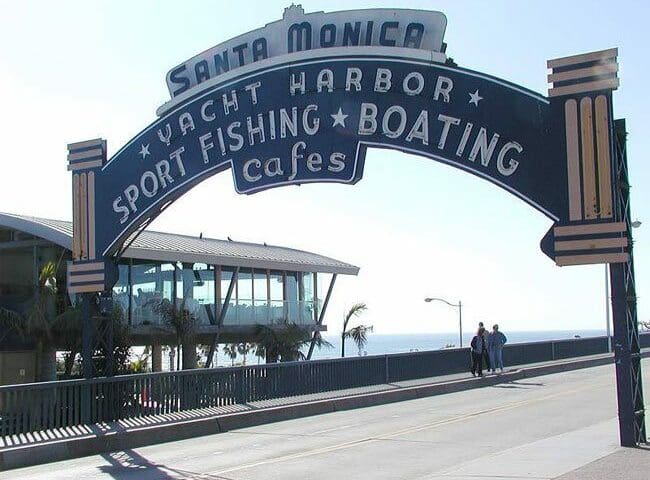

I spent this weekend as a Santa Monica resident for the first time in seven years. Interesting!
Technically my new digs are across the street, the dividing line between Santa Monica and Mar Vista. Coincidentally it’s the same area that I wrote about in my second murder mystery Rip-Off, the airport location of a clusterfuck shootout that shames my hero, Detective Dave Mason of the Santa Monica Police Department.
I’ve been in the city off and on, but as a visitor in these last few years. Now I have a base. My dog Lily and will be here from time to time in an effort to develop a plot for my next Dave Mason mystery.
The contrasts of Santa Monica fascinate me. I drive down Broadway and see the dark doorway of the union hall where I used to work. Three homeless men are huddled there.
» Read more about: Back to the Beach: An Activist Returns to Town »